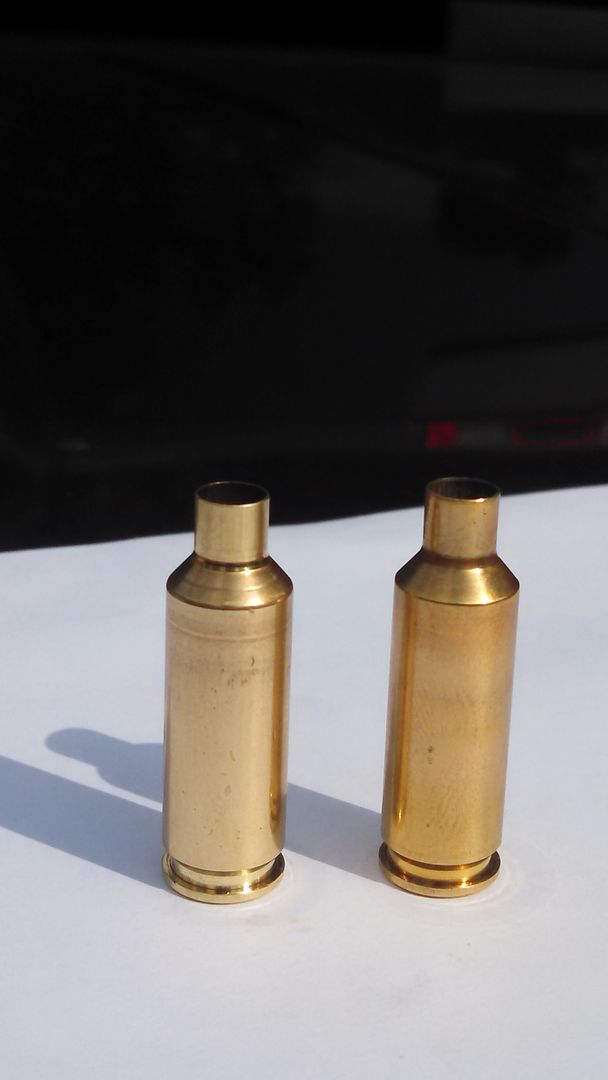Pete Wass
Well-known member
When Annealing
It is best to do it in a darkned room and strive for heating the necks to a straw color. Do not allow them to glow at all. I have found that brass I over annealed does come back after it is fired and worked two or three times. A friend who pased last year, who shot, tested and kept data bases on all of it said that newly annealed cases gave their best accuracy @ firing #2 and accuracy declined slightly with each firing after.
The condition of the surface inside necks is important for consistent neck tension. There is a petina present after the carbon has been burned off , which will give one a gitty feelin when seating. Shiny insides is best and I suspect tough to maintain but hard necks are not a good thing, from my experience.
Properly annealed cases should show he same coloration as the necks new Lapua cases. If they don't turn to that color after a few days, either they are over or not annealed.
Pete
It is best to do it in a darkned room and strive for heating the necks to a straw color. Do not allow them to glow at all. I have found that brass I over annealed does come back after it is fired and worked two or three times. A friend who pased last year, who shot, tested and kept data bases on all of it said that newly annealed cases gave their best accuracy @ firing #2 and accuracy declined slightly with each firing after.
The condition of the surface inside necks is important for consistent neck tension. There is a petina present after the carbon has been burned off , which will give one a gitty feelin when seating. Shiny insides is best and I suspect tough to maintain but hard necks are not a good thing, from my experience.
Properly annealed cases should show he same coloration as the necks new Lapua cases. If they don't turn to that color after a few days, either they are over or not annealed.
Pete
Last edited:




